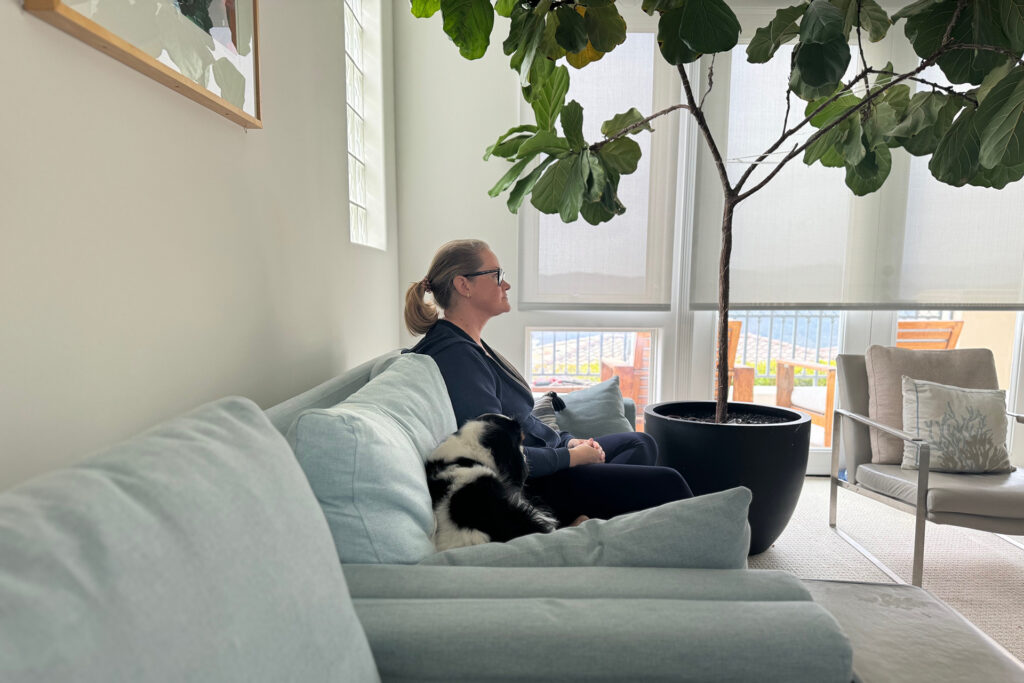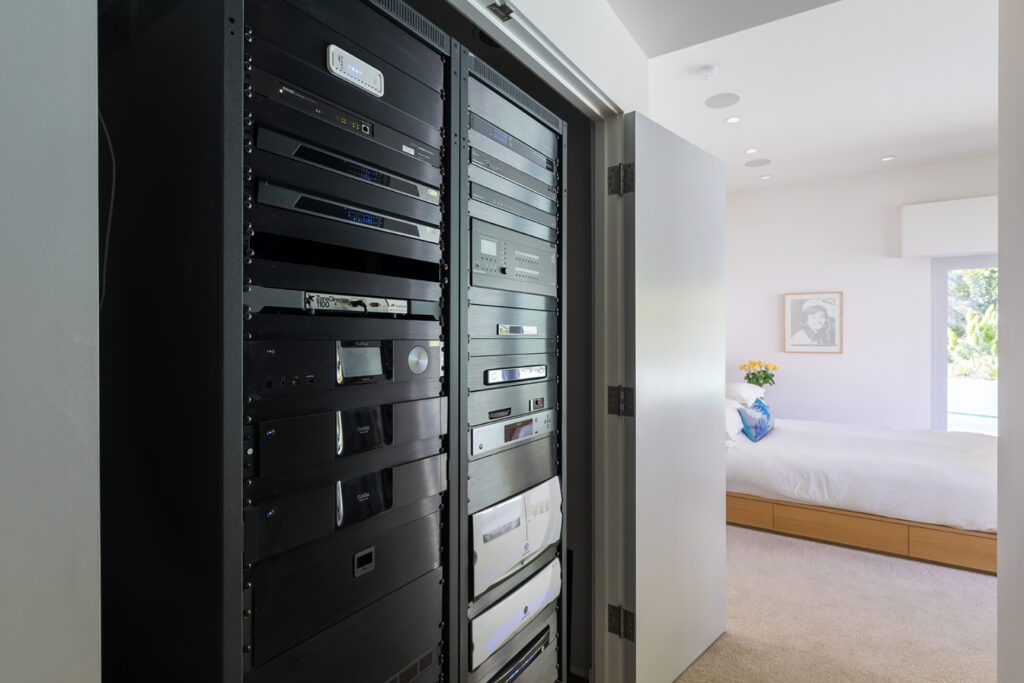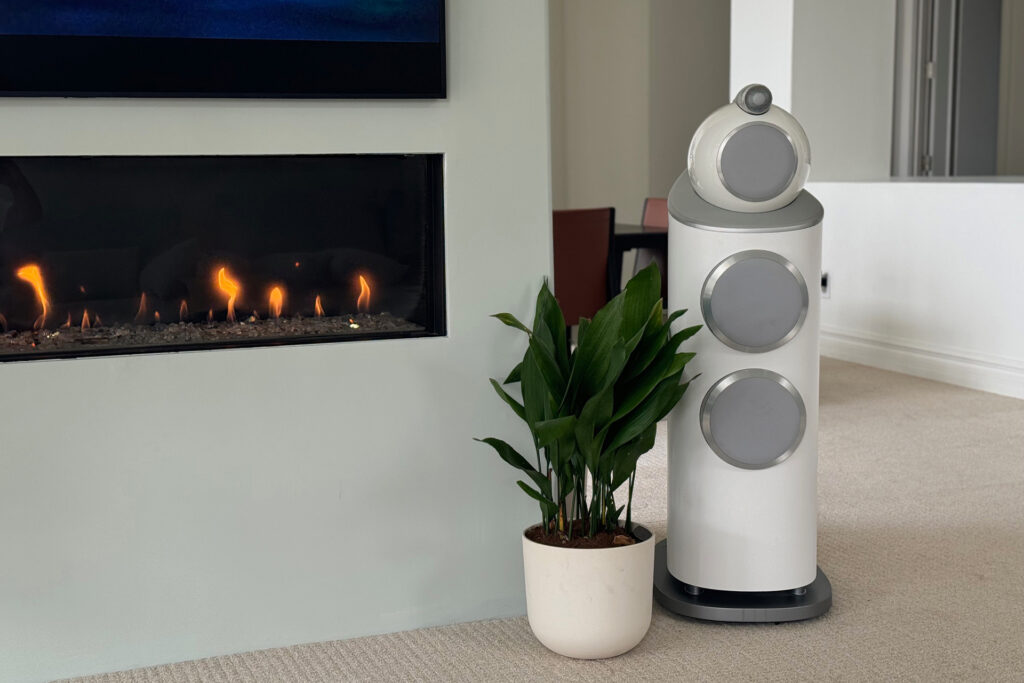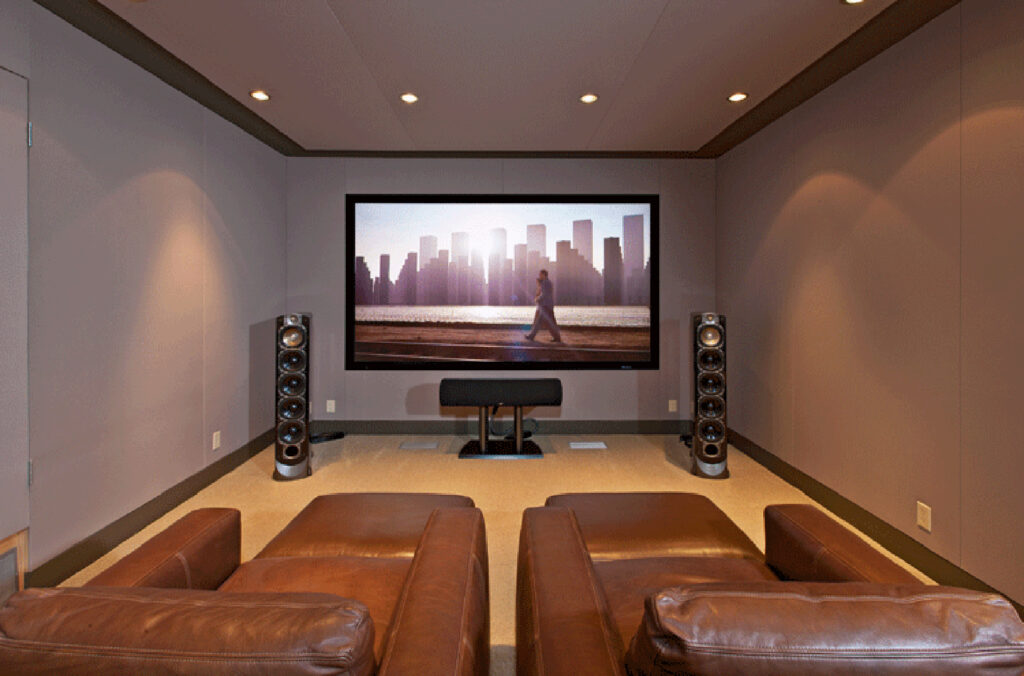Simply put, no one factor impacts the sound of your audiophile system more than the acoustics of your listening room. Some audiophiles are blessed to have a dedicated listening environment where they can address their acoustical issues without much push-back or spousal approval. Many more of us have no choice but to install our audiophile systems into rooms that we also live in. In many ways, the latter option is best, in that the audiophile hobby suffers from the malady of one person listening at a time in an often-messy room that is poorly installed and/or poorly thought-out. We’d be better off as a hobby if listening to music in rooms where others (aka: wife, kids, friends, guests …) can enjoy music as part of being in our homes. We don’t need to be blasting Steely Dan Aja on our Wilsons to make our point. Just being able to bring low-volume, high-resolution sound to our everyday and/or social interactions would expose so many more potential audiophiles to the benefits and joys of listening to music.
As a publisher in the business for over a generation now, I have been beyond blessed to own many (close to all) of the AV components that money can buy. Wilson Audio speakers (five pairs, but who’s counting), Revel Salon IIs, top of the line Paradigms (among the best I owned, and far from the most expensive), big MartinLogan ESLs, and today Bowers & Wilkins 802 D4s. On the electronics front, there are even more awesome components from the likes of Mark Levinson, Meridian, Cello, Faroudja, Krell, Audio Research, Bricasti, Anthem, Pass Labs, SVS, and countless other makers of lust-worthy equipment. I’ve even had the opportunity to build my own audiophile-grade screening room, complete with modest stadium seating, fabric walls, Middle Atlantic rack-mounted gear, and all of the right RPG room treatments. But much of that was in the past.
Today, my reference audiophile system is in my living room and, respectfully, isn’t anywhere close to optimal in terms of acoustics.

So, How Imperfect Is Your Audiophile Listening Room, Jerry?
It is less than optimal, to be polite. Let’s start with where the speakers are placed … on the front wall, my right speaker stands alone in open air, thus no back wall or side wall. Its left-leaning sibling is stuck in a corner on the other side of a $20,000 ultra-modern, Israeli rectangular fireplace. The wall beyond that left speaker is basically all glass. While automated Crestron roll-down shades can soften the effects of the glass, that benefit is sonically modest.
My carpet subcontractor installed a half inch of cork below the carpet to deal with the shoddy construction of the McMansion that I currently live in. That was a cute idea, but barely effective for the room below (more for footsteps than audio), so there goes that money.

Things get much worse at the seating position where my head is (check out the photo of my wife, Krista, sitting in the “hot spot”), as the back wall in my listening room couldn’t be more than 18 inches away from my head/ears. That wall is also simple, painted drywall. The seating in the room, as photographed for this article, is 100 percent IKEA. We sold our $4,000 Room and Board sofa about six weeks ago to a young man from SpaceX, who I found on Craigslist, as he was outfitting his apartment (that is a pending story, that I will tell here, too, as he loved the music that he heard, but had no idea that such sound was even remotely possible). We have yet to figure out what luxury (within some modicum of reason) sofa that we want here, but I can safely tell you it ain’t going to be an IKEA love seat for much longer.
Other factors that impact my sound include very high ceilings (12-plus feet), which I view as a positive factor. What is more sonically detrimental is where my equipment is located, which is in a mechanical room. When I first moved into this home, I took out a big-ass coat closet and blew out the wall to allow access to the front of my rack, and then put doors on it. Behind the double eight-foot-tall Middle Atlantic Racks is ample room to neatly install and manage cables that would/should be the envy of most audiophiles. So, what’s the issue with the rack? Noise, for starters, is an issue. My audiophile electronics are silent. My first-generation $40,000 Kaleidescape sounds like a 1971 Gulfstream III taking off without a hush kit. My Crestron Home system is, equally and concerningly, just as noisy. The doors being closed help mitigate this issue, as does the 20-plus-foot distance that separates my gear from my seating position, but there’s still a pretty high noise floor in the room, which can get a lot higher if the dryer is running on the other side of the house, which is even more noise.
The last factor of sub-optimal performance for my electronics has yet to bite me, but likely will soon. That factor is heat. While I love these new Class-D GaN (and other varieties) amps, I still run a sexy-sounding Class-A Pass Labs XA-25, which some argue is Nelson Pass’ finest-sounding amp (for about $5,000?!!!), but man, does that son of a bitch get hot. And then close the doors and it gets even hotter. To save energy and to reduce heat, I shut the Pass Labs amp down when I am done listening and power it back up an hour or so before any reviewing or serious listening. Can I hear a difference that the warmup period made? Nope, I just do it out of habit and respect.

How Can I Fix These Audiophile Acoustic Problems?
One of the first ways for any of us to look at this is via physical upgrades – specifically room treatments. I was able to purchase a $369 GIK Acoustics Turbo Trap Pro (read my review) bass trap for the left speaker (corner), and it made a massive improvement in the mid and lower bass. That was a cheap, easy and effective sonic solution. The folks at GIK were great to me (the company better known for “tube traps” was anything but nice when I call them – yikes) as GIK offers FREE acoustical design help for any of us. That is a good deal, as are their mostly affordable treatments. They suggested that I add another bass trap behind the speaker in open space and recently sent me one. That’s still on its way, but I trust them and, with the success of the first Turbo Trap Pro, I am willing to try it.
Millennials have strangely made house plants trendy. Oddly, plants also help with the enjoyment your audiophile system. My wife effectively bought a whole bunch of pretty nice yet reasonably priced, self-watering (you fill up the reserve once per month) house plants at Costco, of all places. Not only do these plants help me hide the all-white GIK bass traps, but they provide a modicum of acoustical diffusion, which is an added benefit. How big is that sonically? Again, this isn’t anywhere near the WOW-factor from the GIK Turbo Trap Pro upgrade, but for the money, a spattering of nice house plants isn’t the worst idea that I’ve ever heard for your audiophile system. They also bring in a non-linear, organic feel to the room, as well as a little green color. For those who couldn’t make live plants work, there are fake plants that I’ve see sold at places like our local high-end plant store (Rolling Greens in Culver City) that are not cheap, but look great. They had plastic fig trees that were pretty damn nice and solve this issue nicely.
Diffusion or absorption isn’t easily installed on the back wall of my audiophile listening room. The idea of installing a simple track system that would allow me to put fabric and absorption on my back wall makes sense, until you look at the price. That’s a big wall, thus that “upgrade” is going to cost thousands of dollars and yield minimal results, as well as not add a penny of value to my home. A little absorption on the back wall would be nice, but for me, it is a bit cost-prohibitive.
Diffusion often helps on a back wall. You’ve seen those “cityscape” products in recording studios and audiophile salons alike. They work like a charm for diffusing sound, but again, logistics and aesthetics come into play here, as well as cost. There’s no elegant way to install cityscape treatments behind my seating position, although that likely would benefit the sound in my room. Hint: a bargain way to accomplish this feat in other, less extreme room layouts is to line the back wall with bookcases, and pack your CDs, LPs and/or books there. That will nicely diffuse sound and an IKEA Billy bookcase isn’t too spendy. Even a custom bookcase made by a local carpenter isn’t too crazy in terms of price. Maybe this option will work in your room? It sure as hell won’t work in mine, sadly.
Room correction in the digital domain is another real-world way to get better sound in an imperfect room. My Anthem STR Preamp (read the review) has ARC (Anthem Room Correction) built in, which is a powerful tool and makes that $4,000 audiophile preamp an extremely good value. I own one, and so do my fellow writers, Mike Prager and Andrew Dewhirst. Here’s the problem in my world as a reviewer … If I run room correction when reviewing another component, then what am I actually hearing? Is the performance coming from the room correction or the component? Respectfully, it is close to impossible to tell, so I don’t use ARC during reviews. I also am lusting for a Pass Labs XP-22 designed by Wanye Colburn, as I had one of these $10,000 ultra-simple, two-chassis audiophile preamps in my system, and it was stunningly good. It brought me much closer to the recording. My wife noticed within seconds of switching back to other preamps that the sound “wasn’t the same.” She was right (women have great hearing by the way, even if they aren’t much a part of our hobby … yet). I am selling blood and dabbling in some drug/human/puppy trafficking to make the money needed for a $10,000 preamp in my system, but as they say, “I’ve got mortgages and homes (and stiffness in my bones),” to poorly quote Freddie Mercury and his colleagues in Queen.

So If You Can’t Fix Your Acoustical Problems Easily or Affordably, What Should an Audiophile Do?
This is the operative question that flies in the face of most historical audiophile clichés like “The Preamp of the Month Club,” where we are made to feel bad by the establishment press, who tell us that our systems are somehow not good enough. Bullshit. My system kicks ass – flaws and all. I would play my system for a Grammy Award-winning mastering engineer and not think twice about it. Is my room a mastering lab? Not even close. It is a living room. It has a 65-inch Samsung Frame 4K UHD monitor between the speakers. It is a real room in a real house and we use (and love) it.
You should feel the same way.
We are all looking to improve our audiophile systems. That is the core concept behind the audiophile hobby. What needs to be extracted from the audiophile hobby is the idea that you need to have a perfect room or the latest advertiser’s gear installed in order to really love your audiophile system. That is just lame. If you can’t be with the one you love, love the one you got, I think …
The audiophile hobby is about appreciating and enjoying every stop on your journey. Your life, your budget, your room logistics and other factors all go into how good your room sounds. You likely can’t optimize all of those in the real world. I wrote a story about what I would do with my pending Powerball winnings (I am a repeat Powerball and MegaMillons loser) in terms of audio. I would build a perfect room with top acousticians with the best materials, with a sick art collection, Ketra lighting and the most awesome furniture. The problem is that I keep losing at Powerball, and that leaves me with the audio system that I have now.
After selling my last group of AV publications over five years ago, I kinda got away from high-end audio and home theater while my three year non-compete was in effect. When I decided to get back into the AV publishing business (that didn’t seem likely in late 2019, when I sold HomeTheaterReview.com and AudiophileReview.com after founding and growing them), I decided to build my audio system back up into a more traditional and highly respectable setup, and I’ve been having an absolute blast in the process. I make mistakes. I review products that I don’t love, but I always love the reviewing process, regardless of the product. I love each and every part of the process and try to enjoy every detail as if I was sitting down to an omakase sushi experience. Each bite is unique in the restaurant, just as each audiophile system upgrade or change is worthy of your consideration and attention. My best advice to you is to eat your sushi slowly (don’t just wolf it down, as most Americans do) and savor each bite. Do the same for your audio system as you work on perfecting your rig. Perfect is a stupid concept in life. The process of getting closer to (or chasing) perfect is far more fun and rewarding to chase.
How is your room? What challenges do you have that you can’t easily change? What are the reasons why you can’t make the upgrade? Are there any acoustical or other changes that made a really notable difference? Let us know in the moderated comments. We will approve your comments quickly, as we love to hear from you!




My sense is that the smaller the room, the bigger the issue…but that is not to say that big rooms are immune. Rooms can be too lively, too damped, odd shaped and on and on and on.
A few weeks ago, I purchased a Lyngdorf TDAI 1120 which has their “Room Perfect” room correction and up to eight individually customizable filters that can be user created and applied. I’ve only had the piece for a short time so I’m not ready to post a review or make any great pronouncements…but….
“Room Perfect” is a great marketing name…so far it seems more appropriate to call it ‘room better’…better bass, better imaging…better soundstaging. But then again, Lyngdorf’s stated goal is not to force all speakers to a common curve but to better adapt the speaker’s own curve to the influence of the room by smoothing out the most obnoxious peaks.
The filters that can be applied can in some ways be miraculous…too much sibilance…make a filter for it. Not enough mid bass punch…another filter to take care of that. Cymbals too harsh…no problem.
Room correction is a pretty common thing for the home theater crowd…not so much for the stereo music crowd. I suspect there will be a lot of change in that area over the next 10-15 years.
And yes, the 1120 is only 60/120 watts into 8/4 ohms…but after you have offloaded the deep bass work to some subwoofers and crossed over at 60hz or higher…it has plenty of power and “only” cost $2500.
Very fine article, Jerry! Yet I wouldn’t rule out a cost-effctive moderately-effective thick tapestry or other large piece of art on your rear wall. The trick for moderate absorption is to float it a bit from the wall…maybe with thick absorptive foam-core to lower absorptive freq coverage…or, I’m told, the thickness of the device isn’t as important if its distance from the wall (hence the theory behind acoustic”sails”). So hang from the ceiling a large absorbent textile objet d’art 3-4″ from the wall? You get the idea. And it needn’t have the cost of the Bayeux Tapestry. If it attracts insects spray-clean it occasionally. Maybe it could even be two-sided for flipping for decorating interest?And drape a woolen rug or down blanket on that first-reflection sidewall? Stay well.
Jerry, This is another great essay. For the back wall, you might look into RPG BAD panels. They can be made in any Guilford fabric you like and do very well when near the listener. (I had them in my North Carolina room, where the sofa was close to the back wall.)
GIK Alpha Panels are similar but less expensive. However, they have the scattering plates on the outside, rather than under fabric, so they are a little less decor-friendly.
I used RBG BAD panels and RPG Modex plates in my Brentwood home.
My current home needs to not burn down!!! It is still standing but perhaps not for long
Jerry, good luck, what is going on with the fires is almost beyond comprehension for those of us that have never experienced raging fires!
“I love each and every part of the process” and that is why I enjoy reading your newsletter in comparison to others that are distributed on the net – Ivan
Great article, I love my humble room and system, it sounds great at any volume !
Jerry.. a question if I may. And if anyone else wants to chime in…
I recently had a gentleman to my house from our local higher end home audio store. My wife and I are looking at treating the spare bedroom we use as our music room. From everything I’ve been reading I thought he may have wanted to steer me first towards bass traps (we are doing the treatments in stages for fiscal reasons – we are very much middle class and this is a genuine luxury for us), but he did not. And then I came across this article, which specifically has me asking:
I thought bass traps typically were done floor to ceiling? I’ve not yet seen a situation like yours where there is only one and it doesn’t fill from floor to ceiling. Is this a normal thing to do, or was it an aesthetic choice considering your room (I don’t have to concern myself with any aesthetic issues)?
In one of the houses that I built that burned down in the Palisades Fire, I used the RPG Modex plates. These go INTO the stud bay of your walls and get covered with fabric.
This is a basically invisible and HIGHLY EFFECTIVE, physical way to eat nasty standing waves in the low frequency.
Look into this as I LOVE my GIK treatments but they are much bigger and tougher on the eyes.
—–
Look into a contractor to do FABRIC WALLS for you.
RPG BAD Panels are good too. They are like wood with foam on the back and they have holes drilled into them. Diffusion that goes behind the same fabric wall.
This way your listening room can be GREAT to LISTEN IN but also look like an actual ROOM.
I hope this helps.
Email me if you need more help. I can get you with Bob Hodas or Anthony Grimani for some pro help too.
Jerry
Thank you for the reply, Jerry.
I suspect, based upon your comments and the RPG website, that route would likely be beyond our budget, it I don’t know that.
In the end I would surmise my wife and I would be comfortable spending no more than $3,500 to treat the room. Would this be within the realm of RPG?